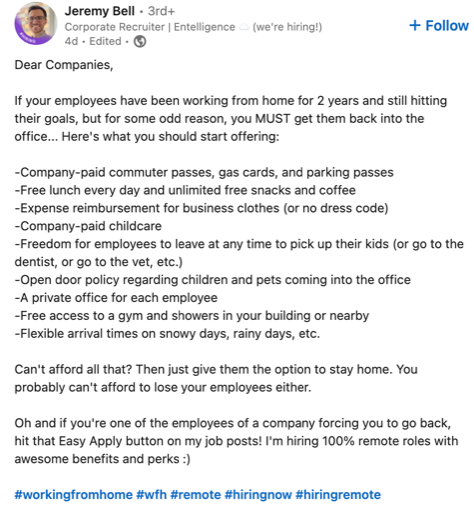

Dear Friends and Colleagues,
In one of the more unforgettable episodes of The Twilight Zone — “Time Enough at Last” — Bank Teller and insatiable bookworm, Henry Bemis, emerges from the blissful solitude of his underground bank vault, where he could read uninterrupted at lunch-hour and without the incessant nagging of those around him, to discover that the world above ground had been destroyed by an H-Bomb.
 His initial despair at facing the prospect of a lifetime alone on earth soon gives way to unbridled joy as he stumbles upon the ruins of the city’s library, with much of its vast collection intact. Excitedly, he realizes he is now free to read all the books he could ever dream of reading, with the time and solitude to do so without disruption. As Henry eagerly sorts and stacks the books that he looks forward to reading in the months and years ahead, he trips and shatters his thick reading glasses, without which he is virtually blind. The show ends with Henry, alone, surrounded by books he can now never read.
His initial despair at facing the prospect of a lifetime alone on earth soon gives way to unbridled joy as he stumbles upon the ruins of the city’s library, with much of its vast collection intact. Excitedly, he realizes he is now free to read all the books he could ever dream of reading, with the time and solitude to do so without disruption. As Henry eagerly sorts and stacks the books that he looks forward to reading in the months and years ahead, he trips and shatters his thick reading glasses, without which he is virtually blind. The show ends with Henry, alone, surrounded by books he can now never read.
Which brings us to our own emergence from the cellar of our Covid isolation and our modern-day walkabout in a post-pandemic world forever altered. A world both full of possibility – as we embrace and adopt some of the unforeseen virtues Covid bestowed upon us — and peril lest we trip and shatter our proverbial spectacles. And, oh, what a spectacle it has been.
In this piece, we hope to help you navigate this new world, if only insofar as it pertains to the workplace, the altered expectations of employers and employees and to catch you up on the things you may have missed while down in the vault these past two years.
Yes, it was two years ago this month that the world went pear-shaped. My how time doesn’t fly. With the most recent return to Normal upon us, this one feeling as though it may have legs, we thought a quick primer would be helpful. Remember in the Spring of 2020 when everyone, us included, was sending around tips and tricks for navigating the virtual world? Well, here’s the corollary; a few helpful hints on the re-entry. Thus far, exiting Covid has proven far trickier and more nuanced than entering it; taking cover in the bunker as the sirens wail is easier, and more urgent, than emerging when they stop.
Ironically, for all the recent freedom foolishness (spoiler alert: you’ve always been free), back in March of 2020, we truly didn’t have a choice. The world just came to a screeching halt, and we all took cover. We did what we were told back then, rather unquestioningly, not because our governments were over-reaching or because we were any less concerned about our freedoms, but because we were scared shitless, and fear is a great motivator.
Fast forward two years. We’re no longer (as) scared – of getting sick (or worse); of losing our business or our job; of being unable to travel or having to wash our grocery bags. Absent being able to compel with fear, we must now use nuance and persuasion; a shift that is alive and well in our places of work, too. Once the fear subsides, people must be convinced, cajoled, and coaxed, rather than conscripted, into action. We need to deftly tiptoe through the remains of our new workplace landscape lest we find ourselves like Henry Bemis, surrounded by opportunity but unable to seize it.
Let’s take the most obvious example of WFH (Work From Home, if you’re new). Not since Casual Fridays became mainstream in the mid-90s has a workplace issue been more talked about. For those of us who have that luxury – and I appreciate that many, many do not – it took about a week to realize it wasn’t all bad. Obligating – dare I say, mandating – your people to now return to the office, absent a compelling reason to do so, will not go well for you. “Work from home or we’re all gonna die!!” was an easier message for people to swallow in March 2020 than “Get back to the office because, well…because!” If we’ve learned one thing during Covid, it is that no one likes being told what they must do. Even the most rational among us prefer making our own decisions.
Our advice? If you are going to insist on a return to the office, you must articulate a clear reason why and you must make the office a desirable place to return to. You see, thanks to Covid and technology the elusive answer to the “work-life balance” question has been found. And most people, though not all, prefer working from home if they are able. Rather than mandating it, we suggest appealing to your people’s sense of FOMO – Fear of Missing Out. If you create an environment at the office that people want to return to, you won’t have to force them to come back.
It’s like Brussels sprouts; boil them and force me to eat them under threat of no dessert? No way. Soak them in olive oil, crisp them in the oven, load them with salt and pepper and drown them in maple syrup? Way. If you want your people back, don’t take attendance or track their key fob swipes or force them to dress up if they don’t need to. That is the boiled Brussels sprout of office culture. Instead, offer them vestiges of their WFH life. More flexibility, perhaps a couple days a week at home, more willingness to participate in meetings virtually, less shaming when someone says they’re under the weather, more trust that they’re actually working when home, less drive-by’s and bed-checks, more pets and kids at work, music and foosball in the office, mid-day runs by the river and more wine in the fridge. Figure out what they like about being at home and try, as best you can, to re-create it at work.
Some, of course, are taking it too far. Exhibit “A”? I recently stumbled upon this LinkedIn post:

What? Do these people not pay for groceries? It’s not a free-for-all. There are still rules and expectations that an employer is more than entitled to ask of those it employs. It’s just the line has moved, and it is harder to spot. To again channel Henry Bemis, it’s blurry. Yet the thrust of Mr. Bell’s point is important. The Great Resignation is real, and employees will vote with their feet if they are not suitably persuaded as to the line’s placement.
“People are waking up to the value of living lives that allow them to connect with themselves and nurture their well-being and resilience. They’re waking up from the collective delusion that burnout is the price we have to pay for success. Companies that realize this will be less likely to be capsized by the great wave of resignations. Those that don’t may be in for a not-so-great awakening.”
-Arianna Huffington, Founder & CEO at Thrive Global,
The “Great Resignation” Is a Great Cultural Shift
As Beverley McLachlin, former Chief Justice of the Supreme Court of Canada, pointed out in this brilliant op-ed about the frailty of freedom: “Our governments must draw the difficult lines that mark the limits of freedom in a particular situation….But governments are not free agents. They are accountable. Accountable to the people, who can vote them out at the next election if they get the line-drawing wrong.”
Employers, too, draw lines and are similarly held accountable. Get it just wrong, mandate the message rather than massage it, roll-out its rationale with a blunt instrument instead of persuasive appeal and they, too, will face the consequences. Employees, though, must equally realize that no one is irreplaceable, that pendulums swing back and forth and back again. While it may be an employee’s market right now, that won’t last forever.
Beyond wine and jeans and foosball tables, there’s a more existential reason to suggest your people come back. And, no, it’s not about productivity. It has been well documented that productivity went up during the WFH era. And, no, it’s not about culture erosion, though that point is more debatable. An indisputable area of concern for both employer and employee is knowledge transfer. I fear there will be a knowledge clot that will work its way to the brain of many organizations; a sort of air-pocket of two plus years of institutional memory and mentorship that will impact this Covid cohort for the rest of its career.
The ‘coffee maker collisions’; those happenstance mentoring moments between a superior and subordinate simply aren’t happening. And those interactions are in the best interests of all involved. The young analyst who isn’t in the right place at the right time to meet that VP and be brought into the Big Project; that VP who isn’t able to ask the name of her young charge while riding the elevator, perhaps a future star who might just have turned into her successor. The inability to pass down, through office osmosis, the unwritten rules of the road, the Marauder’s Map of workplace politics, that’s where the rubber hits the road.
Or, more appropriately, the spectacles hit the sidewalk.
Regards,
Adam